Why I Use a Chest Rig for Hunting
Taylor Hutchinson 02.08.23
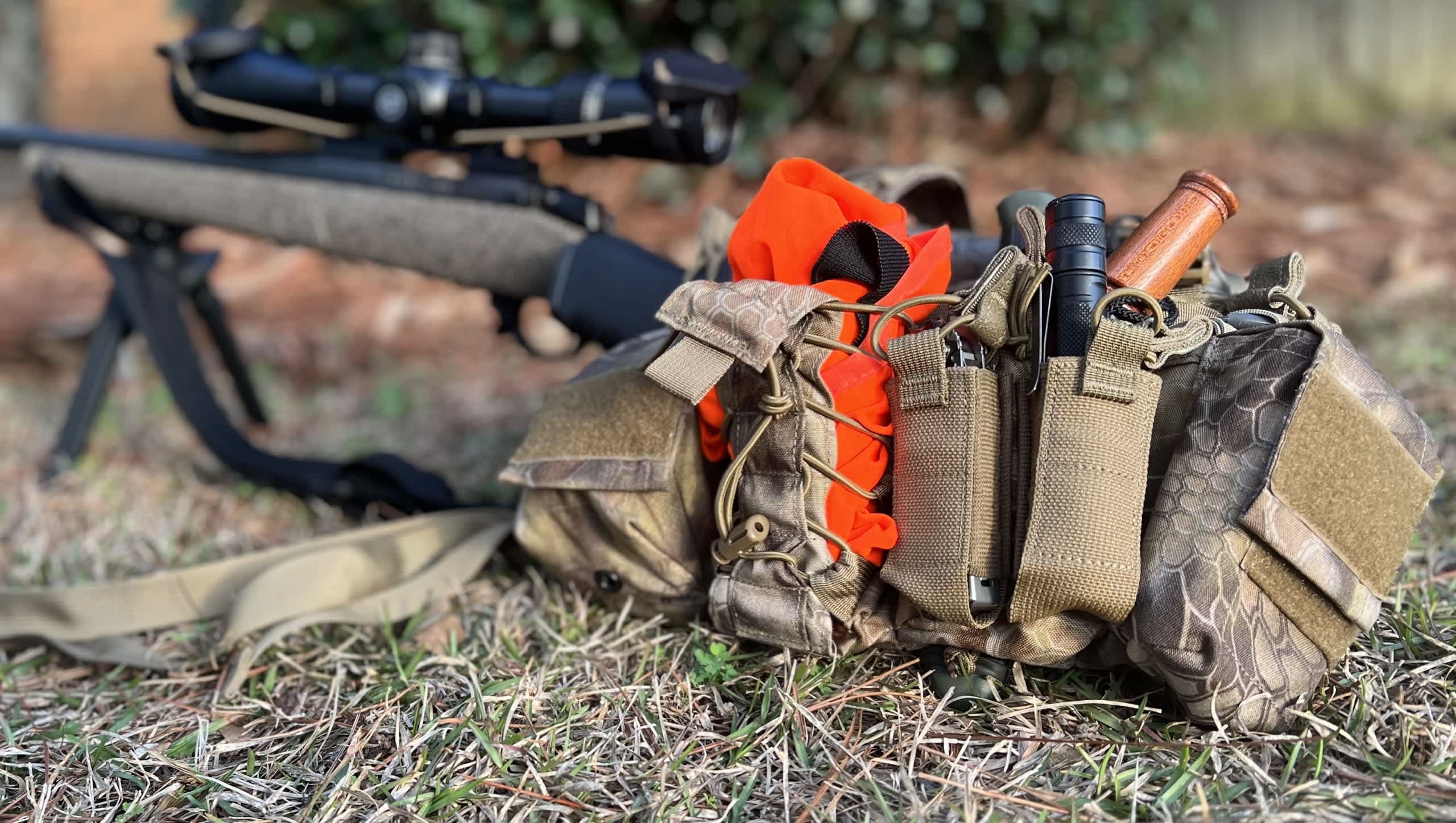
Methods of carrying equipment in the field have evolved over time. We see this evolution in the military use of load-bearing equipment (LBE). The mission dictates the gear, and how it is carried. LBE primarily rode on the soldier’s hips from the early 20th century up to the Vietnam War. Equipment riding on the hips reduces fatigue and keeps the weight on the lower body’s muscular structure. Similar to how hip belts, when worn correctly, take the weight of hiking packs off the hiker’s shoulders and back. The chest rig came about in the latter half of the 20th century. Usually misattributed to Rhodesians during the Bush War, this evolution can be attributed to the Chinese Communists fielding them in the Vietnam War. This was later adopted by US forces when mounted patrols became more prevalent and the ALICE system started seeing limitations for those riding shotgun. Operating in and out of a vehicle helped popularize the chest rig for mounted and dismounted patrols. While I’m not the first to employ chest rigs as a means to carry essential equipment in the field, I do see the same benefits that soldiers in the latter half of the 20th century discovered.
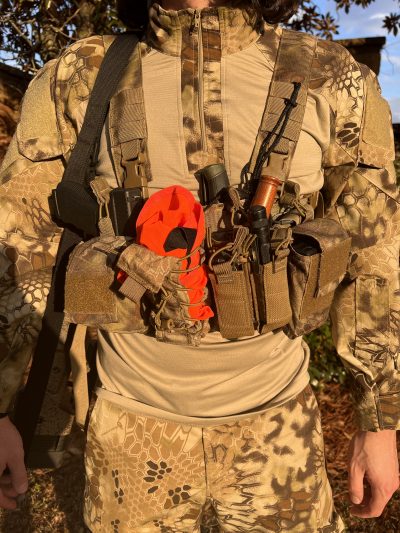
One of many options
Belts, backpacks, and suspenders are alternatives to carrying equipment in the field. These LBE options work well in a system; however, the chest rig can fill a role these others cannot. Belts are great for readily accessible items but are limited in carrying real estate. Backpacks can carry plenty of gear comfortably but aren’t always readily accessible. Using a chest rig allows you to have all the essential kit on you, ready to go when needed. It provides a hands-free way to employ, stow, and reference critical items that would normally take one’s eyes off the game being hunted. The weight is evenly distributed and does not easily fatigue oneself over long excursions. Worn high on the chest, it aids in keeping equipment dry if wading through a swamp, river beds, or duck ponds. Most rigs are modular in some form or fashion and can be adapted for a multitude of hunts. Long stalks, ambushing in the stand, riding in a helicopter, or sitting in the duck blind the chest rig is a versatile piece of kit if set up properly.
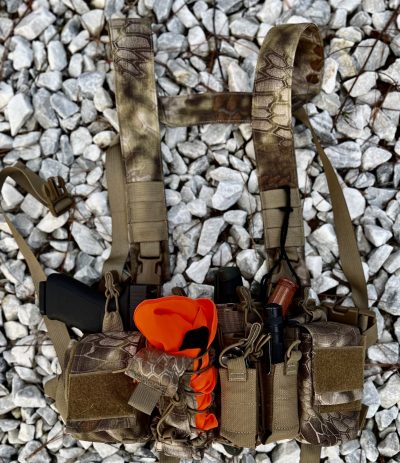
Types of Rigs
Binocular chest packs have become popularized recently, but don’t offer the same versatility that a dedicated chest rig gives a hunter. Tactical or military rigs with some creativity offer unmatched modularity when it comes to LBE. While tons of options are on the market, I have been using the first-generation Haley Strategic D3 Chest Rig with an H-harness. I sourced it from an online trading platform in 2016 when they were being discontinued. The FHF Gear Chest Rig is a more dedicated hunting option that has some interesting accessories that allow it to stretch into multiple roles. Hill People Gear makes some great options as well and was one of the first to popularize chest packs for outdoor use. While a “tactical” hunting chest rig isn’t being used for gunfighting, there are some key features to look for.
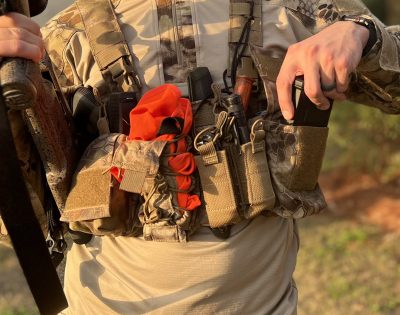
Harness Types
The rig ideally will have the ability to use a wide H-harness. I find these to be more comfortable than the standard X-harness, which can chafe one’s neck and not distribute weight evenly. Having a GP pouch or the ability to add one allows you to flex the chest rig’s role into several hunts. I store shotgun shells in mine while bird hunting and can usually fit two full boxes comfortably. The Velcro backing on a tactical chest rig is also nice to have as it serves as a spot to wedge smaller items such as a field knife or navigation tools. Don’t be afraid to really think outside the box when looking at the options available. The typical M4 magazine pouches serve as a great place for my Glock 20 or Thermacell for the warmer months. Game calls will fit nicely in these pouches as well. The “stuff it” pouch on my D3CR is not as common anymore, but it serves as a great spot for rain gear or my orange vest. Start by laying out your gear and shopping around on eBay, surplus shops, or other tactical shops online. Some reading this already may even have a chest rig in their closet sitting around unused from LARPing. By thinking outside the box, one can really tap into their potential in some unorthodox ways.
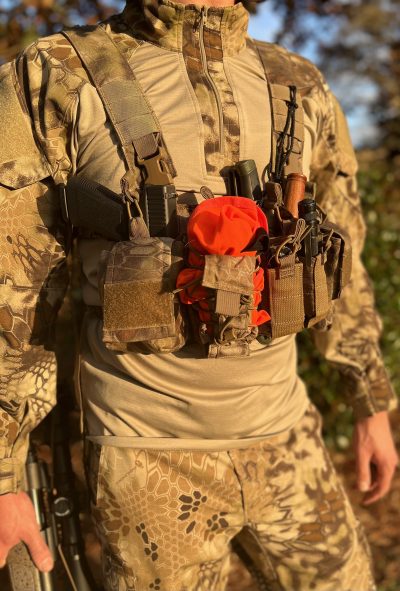
Chest rigs are nothing new. Go outside and touch some grass to see what potential they can unlock for the next big hunt.

